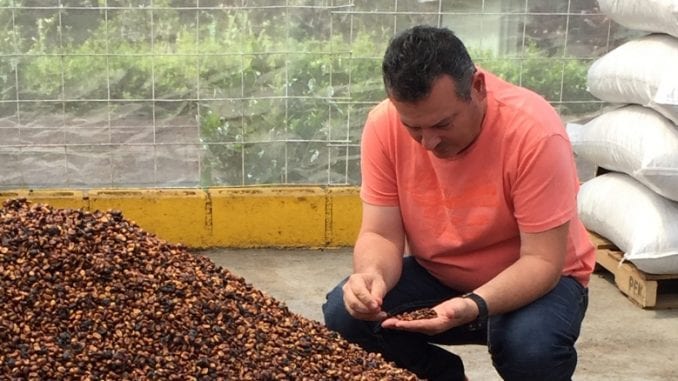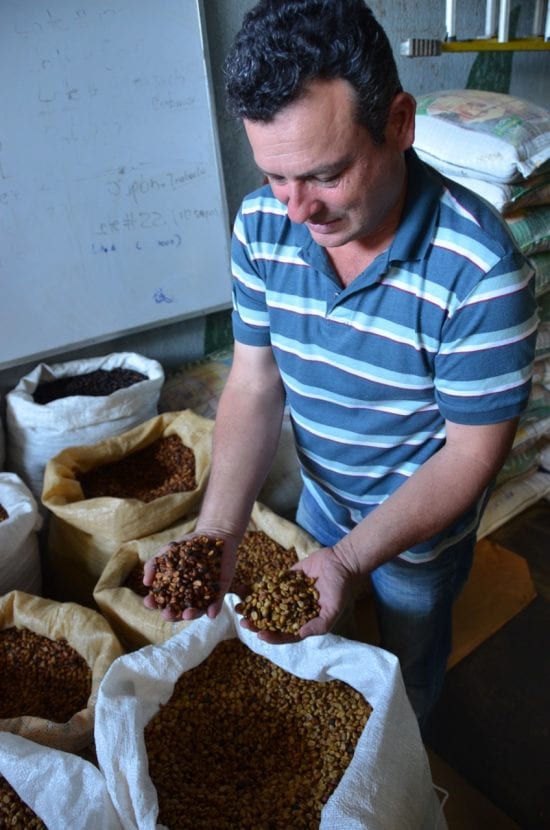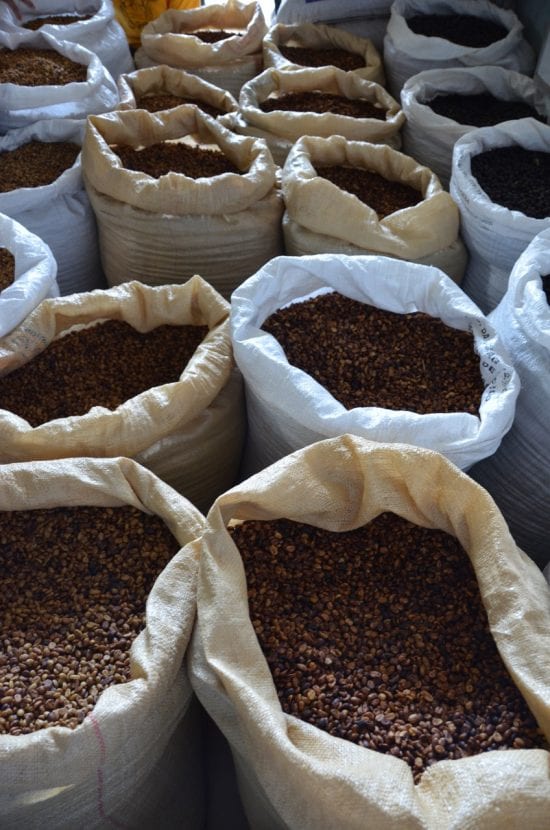
Not quite washed but not quite natural, honey process coffees fall in the middle of both processing types. In Costa Rica, some leading producers are paying close attention to their honey coffees and focusing on quality and sustainability.
BY ERIN MEISTER
SPECIAL TO BARISTA MAGAZINE
Don Oscar and Doña Francisca Chacon don’t keep bees, but they know a thing or two about honey: The couple, who own and operate Las Lajas Micromill and several farms in Costa Rica’s Central Valley, are considered something of the gold standard for producers who are tackling the origin’s increasingly popular honey process coffees. “What smells good in here,” Oscar says, standing inside the greenhouse he uses to dry some of his coffee, and pointing toward the mill’s cupping lab, “will taste good in there.”

Ask a Costa Rican producer what “honey process” means, and you might get a few different (and colorful) responses: There are generally three “degrees” of honey process coffee, ranging from yellow to red to black. In most cases and at most mills attempting the process, the different colors are achieved by mechanically removing differing amounts of the mucilage before putting the sticky beans out to dry. Most of the fruit is removed for a yellow honey, about half is taken off for a red honey, and all of the mucilage is left after depulping for a black. Las Lajas does things a bit differently, leaving 100 percent of the mucilage on the coffee after depulping, and controlling the color through drying practices instead.
Regardless of the specifics, the process itself is gaining popularity throughout the country: Despite the fact that Costa Rica was the first country to really efficiently introduce washing stations to produce fully washed coffees, concerns over water and climate have limited the country’s producers’ access to fresh H2O, which has in part inspired a wave of dry processing including honeys (which can be made using a demucilage machine, dramatically decreasing the amount of water needed) and naturals, both of which bring a new funky flavor profile to Costa Rican coffee, as well as the potential for added value in the market—as long as consumers can get used to them.

For Don Oscar, the switch to honeys was borne from necessity: An earthquake in 2008 eliminated Las Lajas’ access to water for several weeks during the harvest, and he turned to dry-process countries like Brazil and Ethiopia for inspiration. At first, cuppers rejected his coffees as unclean and wild, but soon braver buyers were impressed by the clean, sweet fruitiness and dimension that the coffees had.
Honey processing doesn’t come without a price, however. As with any pulped natural or natural process, there is risk involved: Coffees with any amount of fruit left on them are susceptible to mold, over-fermentation, and other contaminants. They’re also much harder to finish for export: The sticky fruit will often clog or jam the hulling machines, and mills need to stop periodically for cleaning between lots to ensure there’s no material left in the hullers.
What do they taste like? As with anything else in coffee, it depends: Yellow honeys typically have a subtle fruitiness but are recognizably more closely related to washed coffees; red honeys tend to be gently pulpy and sweet with red-fruit notes and some nutty undertones; and black honeys skirt the line between pulped and full natural, with heavy mouthfeel, raisiny sweetness, and dark chocolate/nuts to round things out.
While there’s no real threat that washed coffees from Costa Rica will be a thing of the past, it’s clear that honey is here to stay, honey, and we can expect more experimentation (and probably higher prices) from the producers who are doing the best and keenest work in this direction in the coming seasons.
 ABOUT THE AUTHOR
ABOUT THE AUTHOR
Erin Meister (you can call her just Meister) has always led a kind of weird, caffeinated double life. As a coffee professional, she’s been a barista, retail manager, wholesale-support representative, and educator; as a journalist she’s written and/or edited work for The Boston Globe, The Washington Post, Serious Eats, Saveur.com, and Every Day with Rachael Ray magazine, as well as the gem you’re reading right now. These days she can be found selling green coffee for Café Imports, riding her bike around the beautiful Twin Cities, and finally (finally!) taking a break from blogging. You can email her at meister@justmeister.com.


